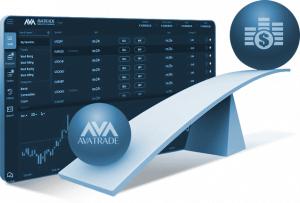Introduction: Forex trading offers substantial profit potential, but it’s essential to comprehend the concepts of leverage and margin to navigate this high-risk, high-reward market effectively. In this guide, we’ll explore what leverage and margin are, how they work, and the significance of proper risk management in your Forex trades.
1. What Is Leverage in Forex? Leverage is a powerful tool that allows traders to control a larger position size than their initial capital. It is expressed as a ratio, such as 50:1 or 100:1. This means that for every $1 in your trading account, you can control a trade worth $50 or $100, respectively.
2. Benefits of Leverage: Leverage amplifies both profits and losses. While it can magnify gains, it also poses a significant risk. Traders use leverage to capitalize on small price movements, making it possible to generate substantial returns with relatively small capital.
3. Understanding Margin: Margin is the collateral required to open and maintain a leveraged position. It is usually expressed as a percentage of the total trade size. For example, if you have a leverage ratio of 50:1 and want to trade a standard lot worth $100,000, you would need to have $2,000 in margin (2% of the trade size).
4. The Role of Margin Calls: Margin calls occur when your account balance falls below the required margin level to keep your open positions. To prevent substantial losses or account depletion, brokers will automatically close your losing trades if a margin call is triggered.
5. Risk Management and Leverage: Proper risk management is essential when using leverage. Never risk more than you can afford to lose. Setting stop-loss orders and maintaining a clear trading plan can help mitigate potential losses.
6. Different Leverage Levels: Forex brokers offer various leverage levels, ranging from 10:1 to 500:1 or more. Be aware that higher leverage amplifies both profits and losses, so choose your leverage level carefully based on your risk tolerance and trading strategy.
7. Regulation and Leverage: Regulatory authorities in some regions have imposed limits on leverage levels to protect retail traders. Ensure you understand the leverage restrictions in your jurisdiction.
8. Trading Safely with Margin: To trade safely with margin, it’s crucial to understand the concept of “free margin.” This is the amount of capital available for opening new positions or absorbing losses without triggering a margin call.
9. Continuous Learning: Stay informed about leverage and margin-related topics and best practices by visiting reputable Forex websites like FX Bankroll.
Conclusion: Leverage and margin are integral components of Forex trading, offering both opportunities and risks. Understanding how they work and implementing sound risk management practices is vital for long-term success. By approaching leverage and margin with caution and continuous learning, you can harness their potential while safeguarding your trading capital.

